John Pickrell
5 REVOLUTIONARY MEDICAL TECHNOLOGIES THAT ARE CHANGING LIVES
—
Flinders’ innovative Medical Device Partnering Program is overseeing the rapid development of a slew of futuristic healthcare technologies.
The Medical Device Partnering Program (MDPP) at Flinders University is an ‘ideas incubator’, which takes great concepts for new medical technology and finds the right mix of clinicians, academics and manufacturers to turn them into real products.
“We identify six to eight ideas a year that have the most potential to make a difference,” says MDPP Director and biomedical engineer Professor Karen Reynolds.
The program launched 10 years ago, when Professor Reynolds was becoming frustrated that new medical inventions “would end up sitting in the lab, not going anywhere”.
So, she created a ‘one-stop-shop’, bringing together inventors, end-users, medical researchers, clinicians and small companies to connect the dots and smooth the journey of exciting tech to market. Here’s a selection of the MDPP’s biggest successes.
1. Maxm Skate
To recover from a knee replacement, patients must perform rehabilitation exercises. But orthopaedic surgeon Dr Matthew Liptak noticed that some of his patients weren’t recovering as quickly as others. The problem was that they weren’t sticking to their motion and strengthening exercises.
The solution he invented was the Maxm Skate – a roller-skate-like device that straps to the foot, easing movement. The MDPP helped him develop sensors that measure the angles of the user’s knee inside the device, which is sent to both the user’s smartphone and their clinician for monitoring.
Enabling patients to track their progress has been a great motivational tool to encourage perseverance, Dr Liptak found. The Maxm Skate is now being tested in clinical trials.
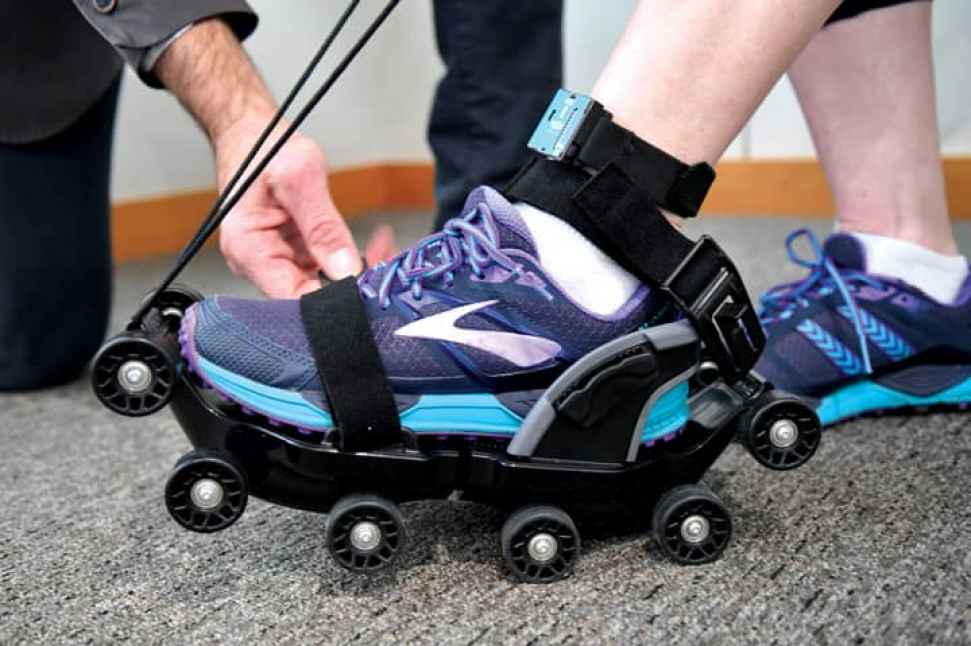
2. Light Therapy Glasses, Re-Timer
Flinders sleep psychologists Emeritus Professor Leon Lack and Dr Helen Wright study the effect of light on our daily rhythms. They realised that exposure to specific kinds of blue-green light could be useful for reducing jetlag and treating both insomnia and a type of depression called seasonal affective disorder, as it stimulates the production of melatonin – a hormone that controls circadian rhythms. The MDPP helped the pair develop prototype light-therapy glasses.
“The glasses work by shining light onto the back of your retina, and readjust your body clock,” Professor Reynolds explains. The prototype was enough to convince investors of its value, and the Re-Timer Glasses are now on the market. They retail for $299, are available in 40 countries, and are used by sports teams such as the Socceroos.
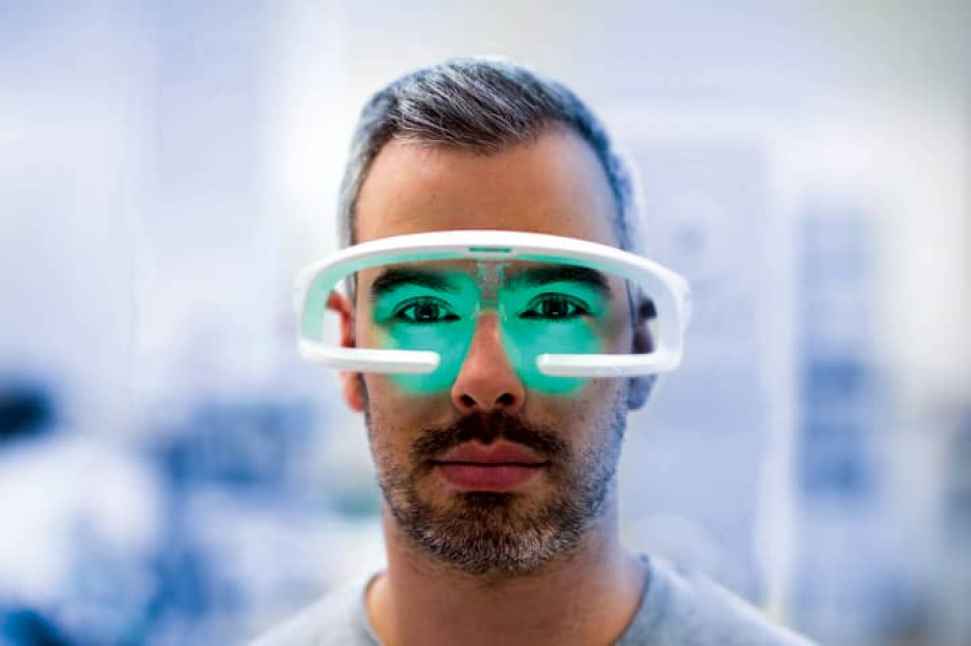
3. Ezy-Aim DiSTAL Targeting Device, Austofix
To fix fractures, surgeons sometimes need to insert a pin into the centre of a limb bone. “The trouble is, they’re never exactly sure where the end is, and they need to put a screw through to hold it in place,” says Professor Reynolds.
To line things up, they must take a series of X-rays, exposing patients to radiation. As an alternative, Adelaide-based company Austofix invented a device that allows surgeons to identify where the end of the pin is, and where the anchoring screw must be inserted.
The MDPP collaborated with end-users to design and create a prototype of this device. Surgeons have lauded the product – now sold in 13 countries – for being easy to use, and the MDPP and Austofix are now working on a second-generation Ezy-Aim that is controlled using a smartphone or tablet.
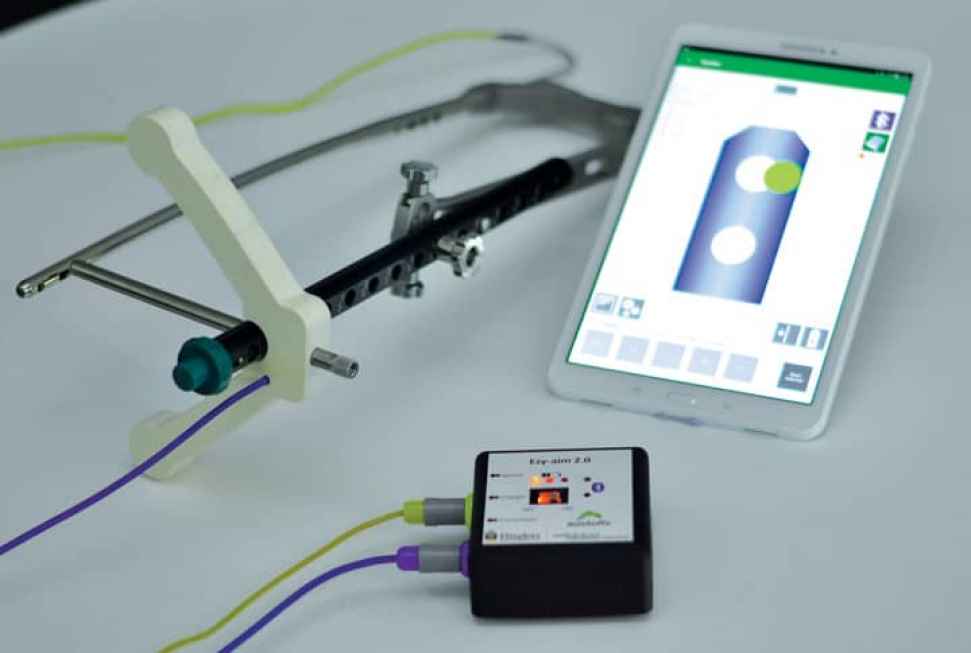
4. CAS Splint
When director of Fluoro Medical Scott Blackburn broke both arms and a leg, he was stunned that paramedics used simple pieces of cardboard to immobilise his limbs. This inspired him to invent the easy-to-use CAS Splint.
“If somebody’s got a suspected fracture, it’s very easy to assemble, enabling you to quickly keep the limb immobile,” says Professor Reynolds. The splint is cheap, waterproof, fits into a standard first-aid kit, and doesn’t need to be removed during X-rays. It’s also disposable or reusable. The MDPP helped Blackburn perfect the device by testing it with end-users and providing vital design modifications. The CAS Splint retails for $24.90.
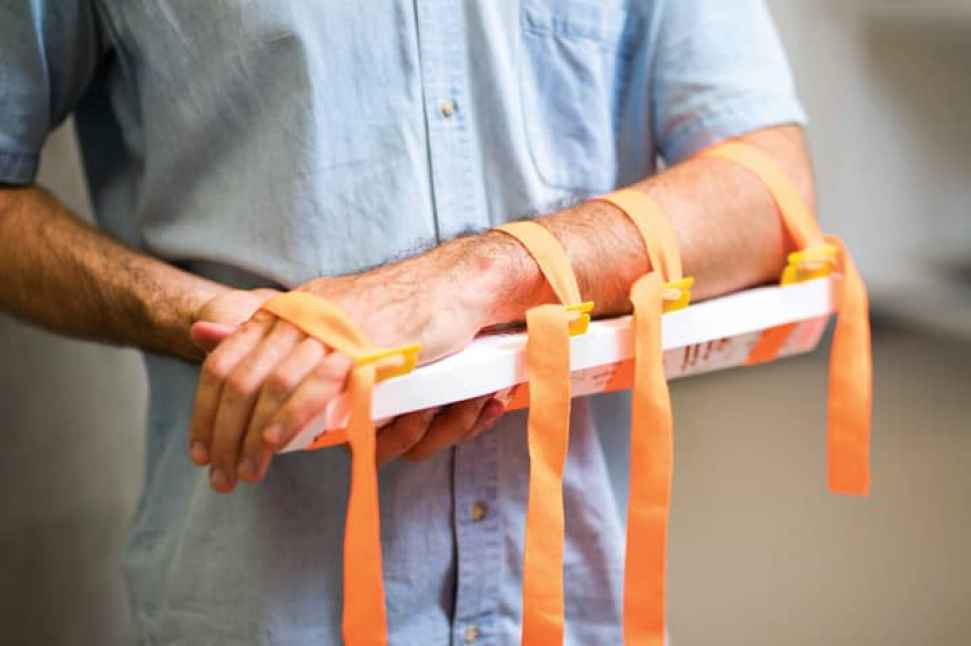
5. Cancer Margin Detection Probe
When doctors perform breast-cancer surgery, it can be difficult to determine if they’ve removed all the affected cells. “The only way of knowing is to take a small tissue sample and look at the margins,” says Professor Reynolds. “If they haven’t got it all, the patient has to come back for follow-up surgery.”
Dr Erik Schartner and Professor Mark Hutchinson from the University of Adelaide wanted a more efficient solution, so they invented the Cancer Margin Detection Probe, which recognises cancerous tissue by its pH levels. This means that surgeons can find the edges of the tumour during surgery, removing the need for additional procedures.
The MDPP assembled a team, including doctors, mathematicians and biomedical engineers, to build a prototype probe and demonstrate its function in an operating theatre. That allowed Dr Schartner and Professor Hutchinson to attract significant funding for further development.
Watch this space.
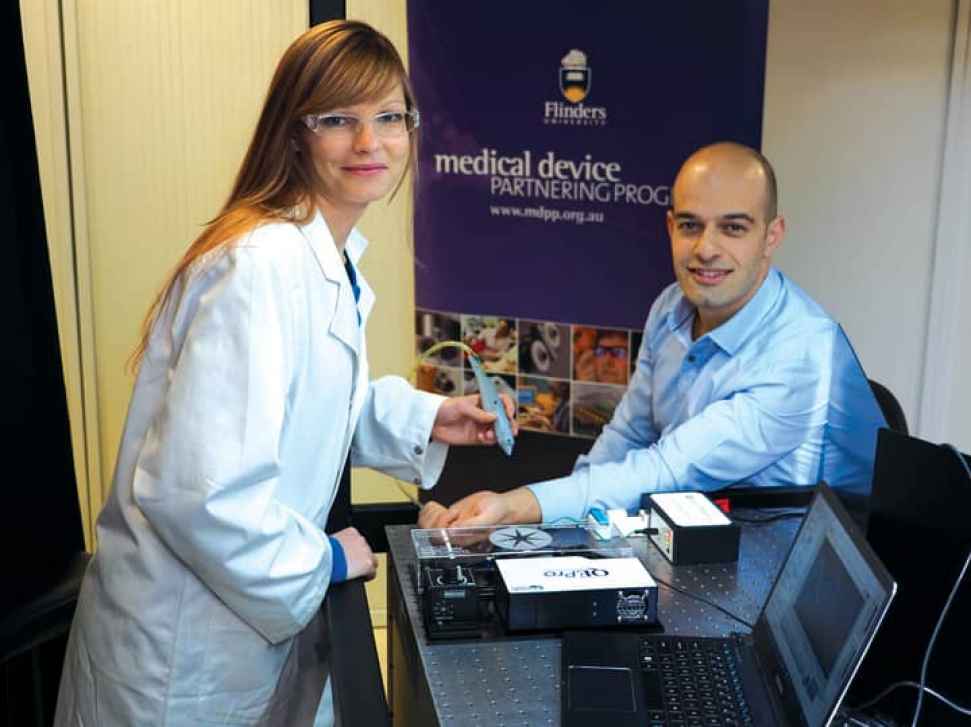
![]()
Sturt Rd, Bedford Park
South Australia 5042
South Australia | Northern Territory
Global | Online
CRICOS Provider: 00114A TEQSA Provider ID: PRV12097 TEQSA category: Australian University











